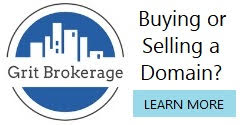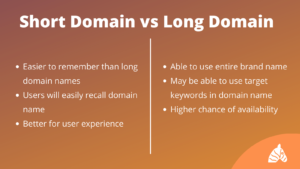Oh no! Have you lost your precious domain name? Don’t panic just yet! In this article, we’ll explore the question, “How can I get my domain name back?” Losing your domain name can be a frustrating and stressful experience, but fear not, because there are steps you can take to reclaim it. So grab a cup of coffee, sit back, and let’s dive into the world of domain name recovery!
Losing a domain name can happen for various reasons – maybe you forgot to renew it, or perhaps it was hijacked by someone else. Whatever the case may be, it’s important to act swiftly and strategically to increase your chances of getting it back. In this article, we’ll provide you with expert advice, tips, and tricks to help you navigate the process of reclaiming your domain name. So, if you’re ready to take control and get that precious web address back in your possession, keep reading! We’ve got you covered.
If you’ve lost access to your domain name, don’t panic! Follow these steps to reclaim it:
- Check your domain registrar’s website for account recovery options.
- Contact their customer support and provide all necessary information to prove ownership.
- File a domain dispute if necessary, through a reputable arbitration service.
- Consider seeking legal advice if all else fails.
Remember to keep your domain registration information updated to avoid future issues. Stay calm and persistent throughout the process, and you’ll increase your chances of getting your domain name back.

How Can I Get My Domain Name Back?
Getting your domain name back can be a challenging and frustrating process, but it is not impossible. Whether you forgot to renew your domain or it was hijacked by someone else, there are steps you can take to regain control. In this article, we will explore different strategies and options you can consider to reclaim your domain name.
1. Contact Your Domain Registrar
The first thing you should do if you find yourself in a situation where you’ve lost your domain name is to contact your domain registrar. Explain the situation and provide any relevant information they may need. They will be able to guide you through the process of recovering your domain or provide you with the necessary steps to regain control.
It’s important to act quickly when dealing with a lost domain name. The longer you wait, the more difficult it may become to retrieve it. Keep in mind that the specific procedures and requirements may vary between different registrars, so be sure to follow their instructions carefully.
1.1 Gather All Relevant Information
Before reaching out to your domain registrar, gather all the relevant information about your domain name. This may include your registration details, proof of ownership, and any communication you have had regarding the domain. Having this information readily available will help expedite the recovery process and ensure that you have all the necessary documentation.
1.2 Be Prepared to Provide Proof of Ownership
In some cases, your domain registrar may ask for proof of ownership to verify your identity and ensure that you are the rightful owner of the domain. This can be done through documents such as invoices, receipts, or any other evidence that establishes your ownership. Be prepared to provide this documentation to support your claim.
2. Check Domain Expiration and Redemption Period
If your domain has expired and is no longer active, it may have entered a redemption period. During this time, the domain is held by the registrar before it is released for registration by others. Check with your registrar to determine if your domain is still within the redemption period and if there is a possibility of renewing it.
It’s worth noting that domain registrars have different policies regarding the redemption period, so it’s essential to familiarize yourself with the terms and conditions of your specific registrar.
2.1 Renew Your Domain
If your domain is still within the redemption period, you may have the option to renew it. Contact your registrar and inquire about the renewal process. They will provide you with instructions on how to proceed, including any associated fees or requirements.
It’s important to note that once the redemption period has ended, it may be challenging to recover your domain. Therefore, it’s crucial to act promptly and renew your domain as soon as possible.
3. Domain Dispute Resolution
In some cases, you may find yourself in a dispute over the ownership of your domain. This can occur if someone has intentionally hijacked your domain or if there is a disagreement regarding ownership rights. In such situations, you can consider domain dispute resolution mechanisms to resolve the issue.
3.1 ICANN’s Uniform Domain-Name Dispute-Resolution Policy (UDRP)
The Uniform Domain-Name Dispute-Resolution Policy (UDRP) is a process established by the Internet Corporation for Assigned Names and Numbers (ICANN) to resolve domain name disputes. If you believe your domain has been wrongfully taken or if there is a dispute over ownership, you can file a complaint through the UDRP.
To initiate the UDRP process, you will need to submit a complaint with an approved dispute resolution service provider. The provider will review your case and make a decision based on the evidence provided. If the decision is in your favor, you may be able to regain control of your domain.
3.2 Legal Action
In some cases, you may need to resort to legal action to reclaim your domain name. This can be a complex and costly process and should only be pursued after considering all other options. Consult with a lawyer who specializes in intellectual property or domain name disputes to assess the feasibility of legal action in your specific case.
It’s worth noting that legal action should be a last resort and should only be pursued if you have a strong case and the resources to support the process.
4. Protecting Your Domain
To avoid finding yourself in a situation where you need to recover your domain, it’s crucial to take proactive measures to protect it. Here are some tips to help safeguard your domain:
4.1 Enable Auto-Renewal
Enable auto-renewal for your domain to ensure that it doesn’t expire inadvertently. Most domain registrars offer this option, allowing you to automatically renew your domain before it expires.
4.2 Use Strong and Unique Passwords
Choose a strong and unique password for your domain registrar account. Avoid using common passwords or reusing passwords from other accounts. This will help prevent unauthorized access to your domain.
4.3 Enable Two-Factor Authentication
Enable two-factor authentication (2FA) for your domain registrar account, if available. 2FA adds an extra layer of security by requiring a second form of verification, such as a code sent to your mobile device, in addition to your password.
4.4 Regularly Monitor Your Domain
Regularly monitor your domain to ensure that it is active and functioning properly. This will allow you to detect any potential issues or unauthorized changes early on and take appropriate action.
In conclusion, losing control of your domain name can be a frustrating experience, but there are steps you can take to regain ownership. Contact your domain registrar, check the expiration and redemption period, consider domain dispute resolution mechanisms, and take proactive measures to protect your domain. By following these strategies, you can increase your chances of getting your domain name back and preventing future incidents.
Key Takeaways: How Can I Get My Domain Name Back?
- 1. Contact the current domain owner to negotiate a purchase or transfer.
- 2. File a complaint with the domain registrar if the domain was stolen or wrongly transferred.
- 3. Seek legal action if necessary, especially if your trademark rights have been violated.
- 4. Consider alternative domain name options if you are unable to regain your original domain.
- 5. Be proactive in securing your domain name in the future to avoid potential issues.
Frequently Asked Questions
Question 1: Can I get my domain name back if it has expired?
Yes, in many cases you can get your domain name back even if it has expired. When a domain name expires, it goes through a grace period during which you can still renew it. If you miss the grace period, the domain may enter a redemption period where you can still retrieve it, but at a higher cost. After the redemption period, the domain may be released for registration by someone else. It’s important to act quickly to recover your expired domain name.
If your domain has already been registered by someone else after expiration, you can try to negotiate with them to purchase it back. However, there is no guarantee that the current owner will be willing to sell it or agree on a reasonable price.
Question 2: How can I recover my domain name if it was hijacked?
If your domain name has been hijacked or stolen, you should take immediate action to regain control. Contact your domain registrar and inform them about the situation. They will guide you through the process of recovering your domain name.
In some cases, you may need to provide evidence of ownership and prove that the domain was hijacked. This can include providing documentation, such as previous registration details or email correspondence with the registrar. The registrar will then investigate the situation and work towards returning the domain to your ownership.
Question 3: What steps should I take if my domain name was mistakenly transferred?
If your domain name was mistakenly transferred to another registrar without your consent, you should act quickly to rectify the situation. Contact your current registrar and inform them about the unauthorized transfer. They will guide you through the process of reversing the transfer and returning the domain to your control.
It is important to provide any evidence you have that proves the unauthorized transfer, such as email correspondence or documentation. Your registrar will work with the appropriate authorities to investigate the situation and take the necessary steps to restore your domain name to your ownership.
Question 4: Can I get my domain name back if it was deleted?
If your domain name was deleted, it may be possible to recover it depending on the circumstances. Contact your domain registrar immediately and explain the situation. They will be able to provide guidance on the specific steps you need to take to recover your domain name.
In some cases, deleted domain names may go through a redemption period during which you can still retrieve them, although there may be additional fees involved. It is important to act quickly and follow the instructions provided by your registrar to increase your chances of recovering your deleted domain name.
Question 5: What can I do if someone else is using my trademarked domain name?
If someone is using your trademarked domain name without your permission, you have legal options to reclaim it. Start by contacting the individual or organization using your domain name and request that they stop using it. Provide evidence of your trademark rights and explain the infringement.
If the infringing party refuses to comply, you can file a complaint with the appropriate legal authorities or seek legal counsel to protect your rights. It’s important to gather all relevant evidence of your trademark ownership and the unauthorized use of your domain name to strengthen your case.
What To Do If You’ve Lost Your Domain Name
Final Summary: How to Reclaim Your Domain Name
So, you find yourself in the unfortunate position of losing your domain name. It can be a frustrating and worrisome situation, but fear not! There are steps you can take to try and get your domain name back.
First and foremost, it’s crucial to act quickly. In the fast-paced world of the internet, time is of the essence. Reach out to your domain registrar immediately and explain the situation. Provide any evidence or documentation that supports your claim to the domain. Be persistent and proactive in your communication, as this will show your genuine interest and determination to reclaim what is rightfully yours. Remember, the squeaky wheel gets the grease!
Additionally, consider seeking legal assistance if necessary. Consult with a domain name lawyer who specializes in these matters. They can guide you through the legal process and help you understand your rights and options. While this may involve some expenses, it could be a worthwhile investment in securing your domain name.
Finally, prevention is key. Take proactive measures to ensure the safety of your domain name in the future. Keep your contact information up to date, enable auto-renewal, and set up two-factor authentication. By being vigilant and proactive, you can minimize the risk of losing your domain name again.
Remember, getting your domain name back may not always be a guarantee, but by following these steps and taking appropriate action, you increase your chances of success. Stay determined, stay persistent, and don’t give up easily. Your domain name may be just a few steps away from being back in your possession!







